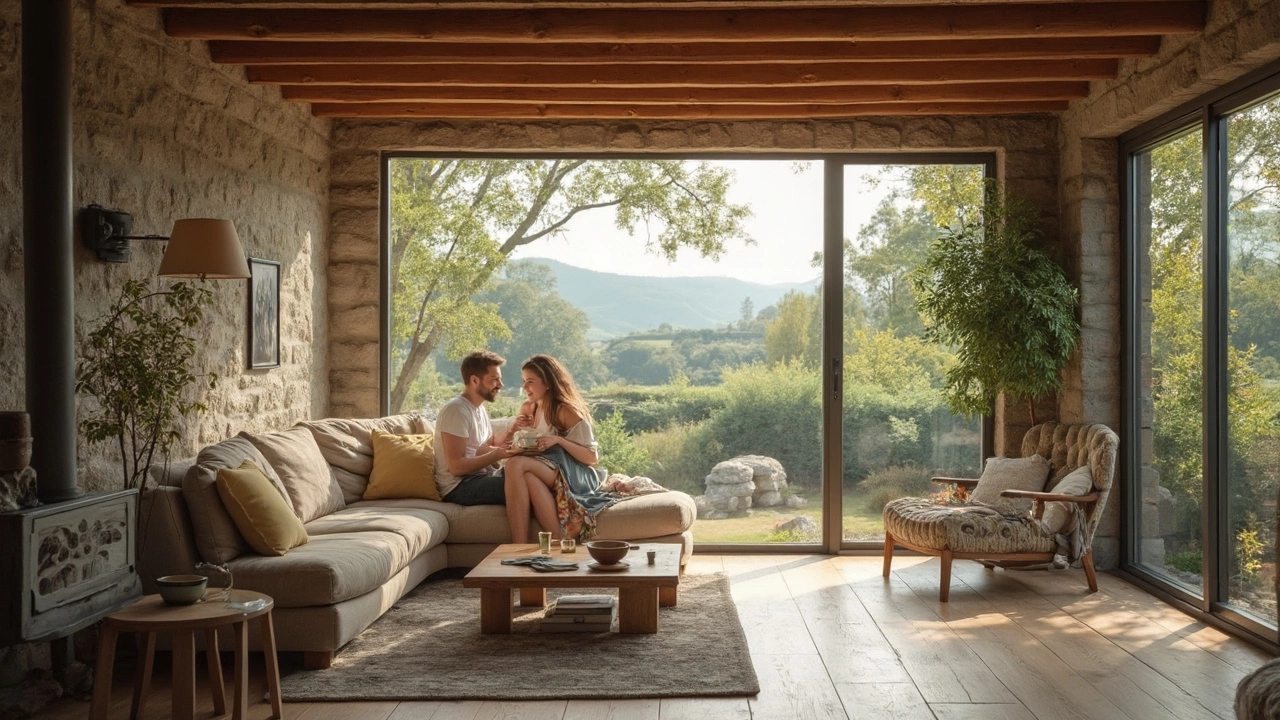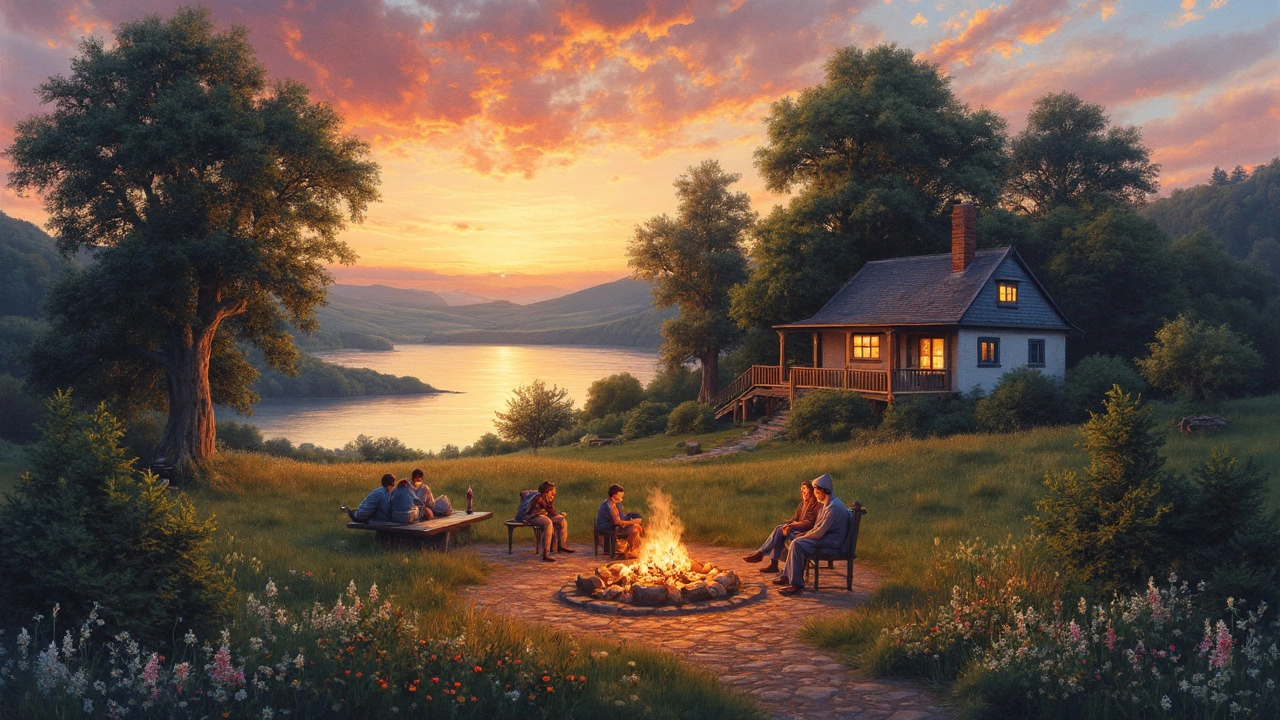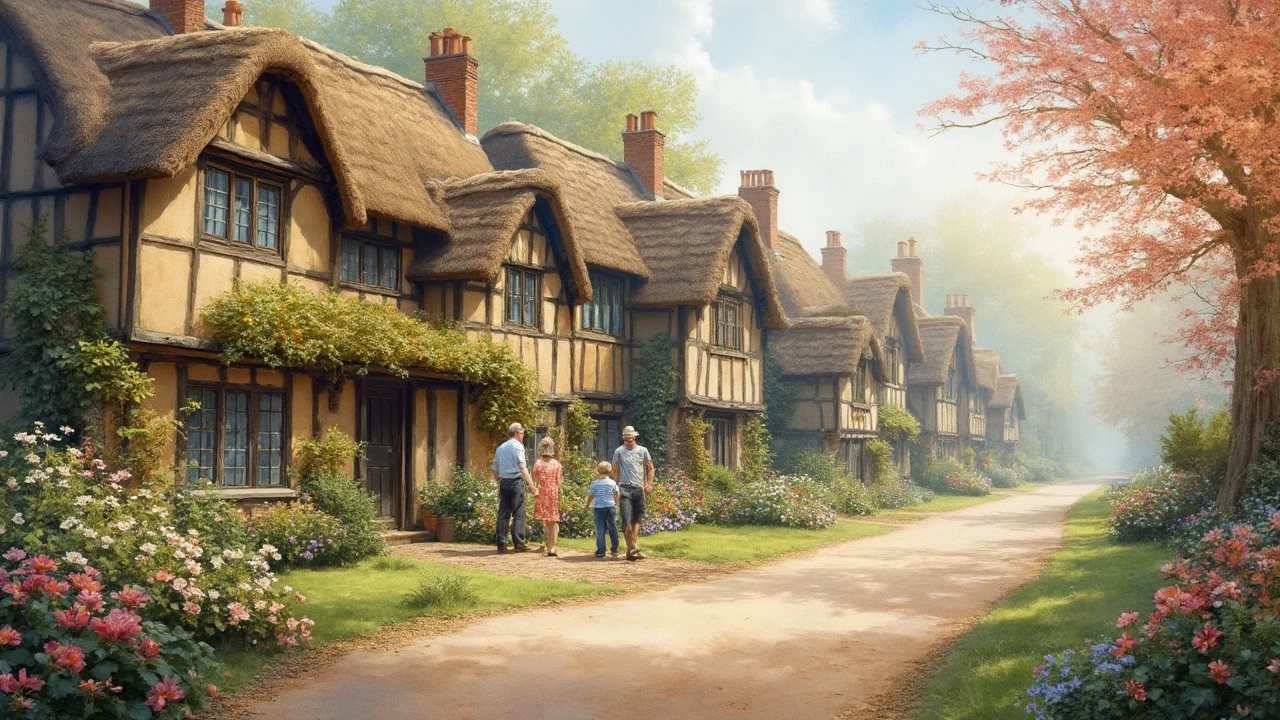Some people think cottages are just stuff from fairy tales—tiny houses with thatched roofs, gardens as wild as a storybook, and maybe even a toadstool or two out front. They’re tucked away in the imagination, somewhere between vintage postcards and Netflix dramas set in the English countryside. But look a little closer and you’ll find cottages haven’t disappeared. They’ve morphed, scattered, survived, and—more often than you’d expect—still exist right here in our own unpredictable and rapidly changing world.
The Real Roots of Cottages: More Than Just Pretty Pictures
Drive through an old European village, and you’ll spot stone cottages that have stood for centuries. Some are quaint, painted white with blue shutters and blooming roses against their walls, much like you’d see on Instagram feeds for #Cottagecore. The cottage wasn’t born cute, though. Its backbone is practicality and survival. The word itself goes back to medieval times when “cottagers” were tenants on a lord’s estate. They had small plots to garden, rooms to house their families, and little else. Privacy was a luxury, and so was heat. No central heating—just a smoky fireplace, often with a kettle bubbling all day.
England, Scotland, Ireland, France, and even Russia all have deep traditions of rural cottage homes. In the United States, the cottage arrived with settlers and was reinvented: think of Cape Cods dotting New England or the storybook charm of Carmel-by-the-Sea in California. Some of the oldest cottages in the UK, like the 700-year-old Pembridge houses in Herefordshire, were built with hand-hewn oak beams. The oldest standing wooden cottage in Finland—Kellokoski—dates back to the 1770s and still smells of birch and pine. These weren’t always vacation escapes. They were the heart of working-class rural life, which is maybe why people are so drawn to them now: they’re cozy, compact, and filled with character you can’t fake.
Cottages today carry those same features—thick walls, small-paned windows, steeply pitched roofs. It’s not just nostalgia: the design actually holds up. Thick walls keep you warm in winter and cool in summer. Tiny gardens still overflow with herbs and flowers, often to the envy of people living in modern townhouses. Rural villages in Britain still buzz with local stories about the families who grew up in the same cottage for generations.
Modern Cottages: New Builds and Clever Conversions
The definition of a cottage has gotten a total makeover in the past twenty years, thanks to a rush of people escaping city stress for rural calm. Take Canada’s lakeside retreats—still called cottages, though some are more modern than anything Hansel and Gretel would recognize. In North America, the “cottage” often means a vacation home, but you’ll find everything from rustic log cabins in Maine to eco-friendly hideaways with fiber-optic WiFi out in Colorado’s wildflower fields.
This shift isn’t happening only in America, of course. In Ireland, people are buying up old stone cottages, gutting the interiors, and giving them new life with light, plumbing, and insulation. The pandemic sent a wave of remote workers into abandoned cottages across Europe. Those little stone houses became home offices, music studios, or just a much-needed escape from relentless video meetings. In Sweden and Norway, there’s even a word for little escapes: “sommarstuga” or “hytte.” Families pass down beloved holiday cottages for several generations, teaching the next in line how to mind the woodstove and identify edible berries.
Modern cottage renovators often face quirky challenges. You might find beams from the 1600s still holding up the roof, or a fireplace big enough to climb into. There’s no blueprint for restoring a centuries-old cottage—each one is a craft project. Even with all the conveniences of today, cottage restorers still celebrate old quirks, like sloping floors, short doorways, and odd little nooks. It’s not about making these houses perfect; it’s about honoring stories carved into every wall, built up by all the people who called those cottages home.
Building a new cottage-style home? It’s more than just slapping on shutters and using distressed wood. Architects use local materials—flint in Sussex, stone in Yorkshire, cedar in Vermont—to honor a region’s traditions. Some new “cottages” are net-zero energy, generating all the power they need from solar panels or heat pumps. There’s even a revival of thatched roofs in parts of southern England, with new thatchers learning from the old hands who mastered the art decades ago.
For folks who dream of cottage life but can’t buy an old house, tiny homes have become the new face of the cottage trend. They borrow elements—window seats, built-in bookshelves, cozy fireplaces—and shrink them into a footprint small enough to move if you get restless. Search online, and you’ll see stunning modern cottages in places as surprising as Thailand or Costa Rica, featuring bamboo and palm leaves right next to glass walls and plush décor.

Cottages in Pop Culture: More Than Instagram Aesthetics
The #Cottagecore movement has gone wild in the past five years, romanticizing rural living for a whole generation that grew up on social media. But way before TikTok, cottages were the backdrop of literature, film, and art. Think about Jane Austen’s “Sense and Sensibility”—the Dashwood family’s cozy Devonshire cottage almost steals the show. Fairy tales from the Brothers Grimm to Studio Ghibli’s “My Neighbor Totoro” picture cottages as magical places, where the mundane meets the extraordinary.
Artists have always loved cottages. Monet’s garden in Giverny, for example, is practically a lesson in cottage gardening. British poet John Clare wrote about the simple joys and heartbreaks of cottage life, long before “hygge” became a hashtag. And in the 1980s, cozy cottage interiors—think Laura Ashley prints and sun-washed window seats—inspired a wave of home décor trends that still show up in magazines today.
Of course, pop culture also creates myths. Life in a cottage isn’t all baking bread and gathering wildflowers. Modern cottage owners have to deal with drafty windows, occasional mice, unpredictable WiFi, and the dangers of pipes freezing in winter. Interior designers now offer practical tips: insulate carefully, invest in wood-burning stoves, add heated floors if the budget allows. But fans of cottage living argue these little hassles are worth it for what you get in return—sun streaming through tiny windows, the smell of home-grown lavender, a place where even rainy days feel like an adventure.
If you’re dreaming of #Cottagecore for real, try spending a week at an authentic rural cottage. Lots of UK and Irish agencies rent out historic cottages, and small towns in Canada, New England, and Wales have short-term rentals, too. Read reviews. Ask about heating, road access, and how far it is to the nearest shop. The best cottages balance charm and comfort—think vintage furniture without the musty sheets or saggy sofas.
Why the World Still Loves Cottages
Cottages have survived not by standing still, but by adapting. After World War II, many rural cottages were abandoned as people flocked to big cities for work. By the 1970s, though, there was a new hunger for homes with character, charm, and a connection to land. People realized these weren’t just quaint leftovers—they were testaments to endurance, resourcefulness, and community.
Research from the UK National Trust says that rural cottages are some of the most sought-after homes when they hit the market. In 2023, agency records showed that a third of first-time buyers in the Cotswolds and Lake District wanted small historic cottages. There’s a catch, though: many end up needing significant repairs, like updating the wiring, reroofing, or dealing with ancient plumbing. There’s a reason a big chunk of these buyers secretly hope for an old cottage “with good bones”—one they can tinker with, not totally rebuild.
People also crave the lifestyle cottages represent. Home isn’t just four walls; it’s the sound of a kettle boiling, the sight of sunlight through old glass, the feeling of a place that fits you like a favorite sweater. The pandemic didn’t invent this longing, but it definitely dialed up the appeal. Families wanted space, calm, and somewhere to let chickens wander between hollyhocks and herbs. That’s why so many city dwellers are buying cottages, or even building new ones that draw on local tiny-home traditions.
Some cottages are now eco-experiments, equipped with rainwater collectors, plug-in electric vehicle stations, and composting toilets. Community projects in Cornwall and Yorkshire have turned old farm cottages into artist retreats, bakeries, and renewable energy headquarters. Centuries-old thatched cottages rub shoulders with minimalist Scandi-style newcomers, all united by their promise: a bit of independence, a bit of wild, and a lot less noise than anywhere else. Cottage living isn’t about stepping backward—it’s about blending old wisdom with new imagination.

Tips If You’re After the Real Cottage Experience
First off, location is everything. Whether you want rolling English fields or forested lakes in Ontario, look for a village or rural area with classic cottages still standing. Check the local listings for old stone or timber-frame homes—that’s a dead giveaway you’re on the right track. Want the most authentic feel? Hunt down a single-story cottage with a steep roof, thick stone or brick walls, and at least some kind of garden, no matter how small. Huge lawns are rare; cozy plots with vegetables and wildflowers are the standard.
If you’re hoping to buy, get familiar with the quirks: low ceilings, odd staircases, and maybe a fireplace or two that wasn’t made for roasting marshmallows. Hire surveyors who know historic homes—they’ll spot problems before you do. Watch for signs of damp, woodworm, and old plumbing. Don’t be scared off; small repairs can make a massive difference. But know what you’re getting into and budget for a few (or many) fixer-upper surprises.
For those who just want a taste of cottage life, try renting through agencies that specialize in historic rural homes. They usually give detailed descriptions and photos. Read up on reviews for any that mention drafty rooms or tricky access roads, especially in winter. Pack cozy clothes, sturdy boots, maybe a flashlight for late-night walks back from the village pub.
Once you settle in, lean into the lifestyle. Ditch your usual work schedule, bake a loaf of fresh bread, grow salad greens in a box by the window, and light candles when the sun goes down. Take a real break from screens (okay, maybe one photo by the garden gate). For the ultimate in cottage authenticity, find out if there are community events: pop-up farm markets, book clubs, or traditional music sessions in the local hall.
Feeling inspired to create your own cottage vibe back at home? You don’t need a thatched roof to capture the mood. Add some botanical prints, vintage mugs, potted lavender, or a second-hand armchair by the window. Swap out harsh LEDs for soft bulbs and pile up blankets. If you have a tiny outdoor space, plant herbs or wildflowers that attract butterflies. Even in the busiest city, you can bring a little bit of cottage calm into your life.
No, cottages never actually went away. Yes, they’ve changed—a lot. From medieval roots to modern must-haves, their story is right there, just behind the garden gate. Still standing. Still winning hearts. If you ever long for less noise, more coziness, and a life with slower mornings, you don’t need to look far. Cottages are out there. They’re waiting, just like always.
